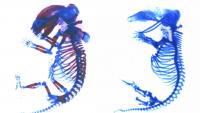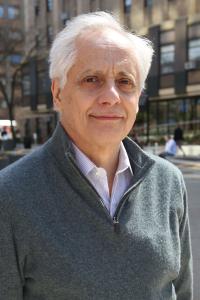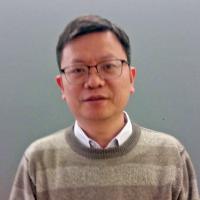Karsenty Lab

Location and Contact Information
- F. Lissette Rodriguez flr2113@cumc.columbia.edu
Principal Investigator
The focus of the laboratory has been since its inception in skeletal biology. This started with identifying the master gene of bone formation and has evolved over the years in studying the physiology of the skeleton. More precisely, the question we are pursuing is, does bone have other functions besides protecting internal organs and ambulation? To narrow down this question, based on cell biological and medical observations, we posited that there should be a coordinated regulation, endocrine in nature, of bone mass, energy metabolism, and reproduction. The tent of this hypothesis we are currently studying is that bone is an endocrine organ regulating at least energy metabolism and reproduction and at most more physiological functions. We are using genetics in model organisms, human genetics, physiological, cellular, and molecular approaches to study the functions and mode of action of a bone-derived hormone we have identified, osteocalcin, and its various receptors. Through loss and gain of function experiments, we have identified a surprisingly large number of physiological functions ranging from memory to muscle function during exercise that, in mammals, are regulated by osteocalcin signaling. In agreement with the fact that circulating levels of osteocalcin decline steeply with age, most of the physiological functions regulated by osteocalcin are severely hampered by aging. The work in the laboratory currently addresses two broad questions. The first one is to identify a common thread among all the functions of osteocalcin with the goal of identifying new ones and, more broadly, establishing the identity of the skeleton as a mammal-specific regulatory organ. A second question that is actively pursued currently is to harness the biology of osteocalcin for therapeutic purposes with a particular emphasis on age-related decline in physiological functions regulated by osteocalcin, and that remains, until now, an unmet medical need.
Lab Members
Current Lab Members
Select Publications
Mera P, Laue K, Ferron M, Confavreux C, Wei J, Galan-Diez M, Lacampagne A, Mitchell SJ, Mattison JA, Chen Y, Bacchetta J, Szulc P, Kitsis RN, de Cabo R, Friedman RA, Torsitano C, McGraw TE, Puchowicz M, Kurland I and Karsenty G. Osteocalcin signaling in myofibers is necessary and sufficient for optimum adaptation to exercise. Cell Metab. 2016 23 (6):1078-92.
Wei J, Shimazu J, Makinistoglu M, Maurizi A, Kajimura D, Zong H, Takarada T, Iezaki T, Pessin JE, Hinoi E, and Karsenty G. Glucose uptake and Runx2 synergize to orchestrate osteoblast differentiation and bone formation. Cell. 2015 161 (7): 1576-91.
Oury F, Khrimian L, Denny CA, Gardin A, Chamouni A, Goeden N, Huang YY, Lee H, Srinivas P, Gao XB, Suyama S, Langer T, Mann JJ, Horvath TL, Bonnin A, Karsenty G. Maternal and offspring pools of osteocalcin influence brain development and functions. Cell. 2013 Sep 26;155(1):228-41. doi: 10.1016/j.cell.2013.08.042.
Oury F, Sumara G, Sumara O, Ferron M, Chang H, Smith CE, Hermo L, Suarez S, Roth BL, Ducy P, Karsenty G. Endocrine regulation of male fertility by the skeleton. Cell. 2011 Mar 4;144(5):796-809. doi: 10.1016/j.cell.2011.02.004. Epub 2011 Feb 17.
Lee NK, Sowa H, Hinoi E, Ferron M, Ahn JD, Confavreux C, Dacquin R, Mee PJ, McKee MD, Jung DY, Zhang Z, Kim JK, Mauvais-Jarvis F, Ducy P, Karsenty G. Endocrine regulation of energy metabolism by the skeleton. Cell. 2007 Aug 10;130(3):456-69.
Berger JM, Singh P, Khrimian L, Morgan DA, Chowdhury S, Arteaga-Solis E, Horvath TL, Domingos AI, Marsland AL, Yadav VK, Rahmouni K, Gao XB and Karsenty G. Mediation of the acute stress response by the skeleton. Cell Met, In press, 2019
Karsenty G. Khosla S. The crosstalk between bone remodeling and energy metabolism: A translational perspective. Cell Metab. 34(6):805-817, 2022.
Berger J., Karsenty G. Osteocalcin and the physiology of danger. FEBS Lett. 596(5):665-680, 2022.





